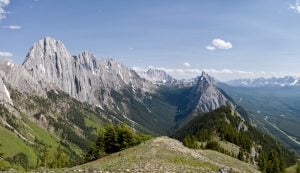The real canary in the coalmine
How the report describes the wolverine in terms of the effect that landscape change is having on large mammals in mountain environments.
Alarmingly sparse
How the report described the presence of wolverines outside the borders of Banff and Jasper national parks.
The Magnificent Seven
The nickname for the seven wolverines scientists found in the entirety of Alberta’s Kananaskis Country during research in the 2010s.
4,211
The size in square kilometres of Kananaskis Country.
Mountain tourism sustainability
2010
The year the whitebark pine tree — which in Canada is found only at high elevations in the mountains of British Columbia and Alberta — was listed as an endangered species in Canada.
2013
The year Lake Louise Ski Resort, located in Banff National Park, cut down 38 whitebark pines.
7,000
The number of whitebark pine trees the resort later identified and tagged, with the help of consultants and Parks Canada.
Full-time
The employment status of the environmental manager the resort hired after being fined for cutting down the trees.
$2.1 million
The amount of that fine.
Step up and engage proactively in environmentally-minded management programs that are meaningful and multi-faceted
What the report says tourism operators must do if they wish for long-term relationships with the mountain environments that serve as essential attractants for their clients.
$1.373 billion
The estimated amount of ski area revenue generated in Canada in 2016-17, according to the Canadian Ski Council.
$794 million
The total revenue from winter operations in Western Canadian ski areas in 2016-17, according to the Canadian Ski Council.
4
The number of years in a row that visitation to Parks Canada’s mountain parks (Banff, Jasper, Yoho, Kootenay, Waterton Lakes, Mount Revelstoke and Glacier national parks) has increased since the 2013-14 season, when attendance was 7,334,558.
9,207,562
The number of visitors to Parks Canada’s mountain parks in 2017-18.
Watermelon snow
More than a third
The proportion of the surface of a 1,900-square-kilometre icefield in Alaska that was covered by blooms of microscopic red algae that create the phenomenon known as watermelon snow.
1/100th
The diameter in millimetres of the alga that form the blooms.
Astaxanthin
The name of the pigment that makes the algae red.






